Overview of the Grand Union Canal
The Grand Union Canal, spanning 137 miles, is a vital waterway connecting London to Birmingham. Built in 1805, it remains a historic transport route and popular destination for boating, cycling, and walking adventures.
The Grand Union Canal is a 137-mile waterway connecting London to Birmingham, providing a scenic route for boating, cycling, and walking. Built over 200 years ago, it serves as a historic transport link and a popular recreational destination. The canal flows through diverse landscapes, including urban areas and picturesque countryside, making it a cherished part of the UK’s waterway network. Its detailed map, available in PDF format, offers a comprehensive guide to locks, mooring points, and nearby facilities, essential for planning trips. The map is accessible on various devices and can be downloaded for free, ensuring easy navigation for both locals and visitors. It remains a vital resource for exploring this iconic waterway.
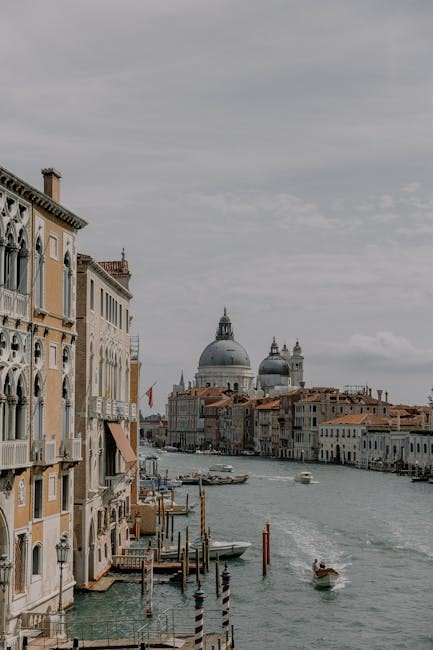
Significance of the Grand Union Canal Map PDF
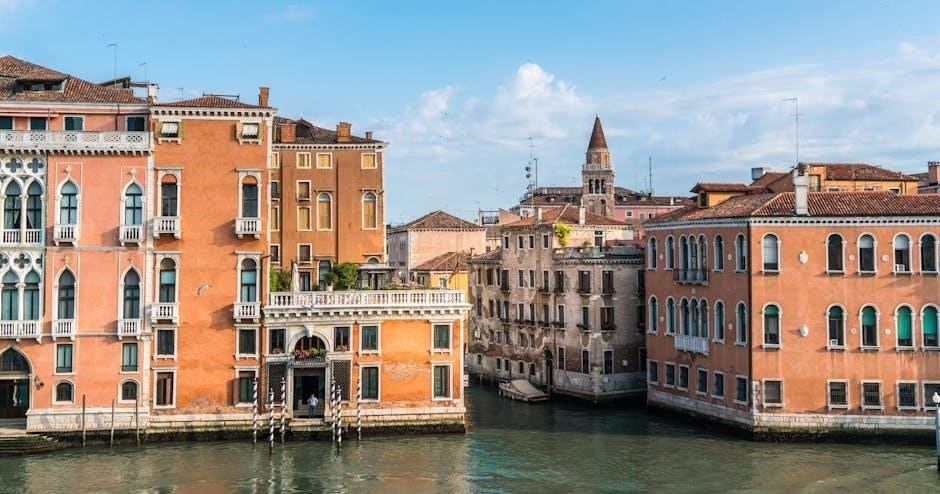
The Grand Union Canal Map PDF is an essential resource for navigating and exploring the iconic waterway. It provides detailed information about locks, winding holes, and services along the canal, making it invaluable for boaters, cyclists, and walkers. The map highlights key geographical features, such as rivers and towpaths, and includes updates to ensure accuracy. Its digital format allows users to access it on various devices, while the option to print ensures traditional navigation remains possible. The PDF is particularly useful for planning trips, identifying points of interest, and discovering hidden gems along the route. It serves as a comprehensive guide for both casual visitors and seasoned enthusiasts, enhancing the overall experience of this historic canal.
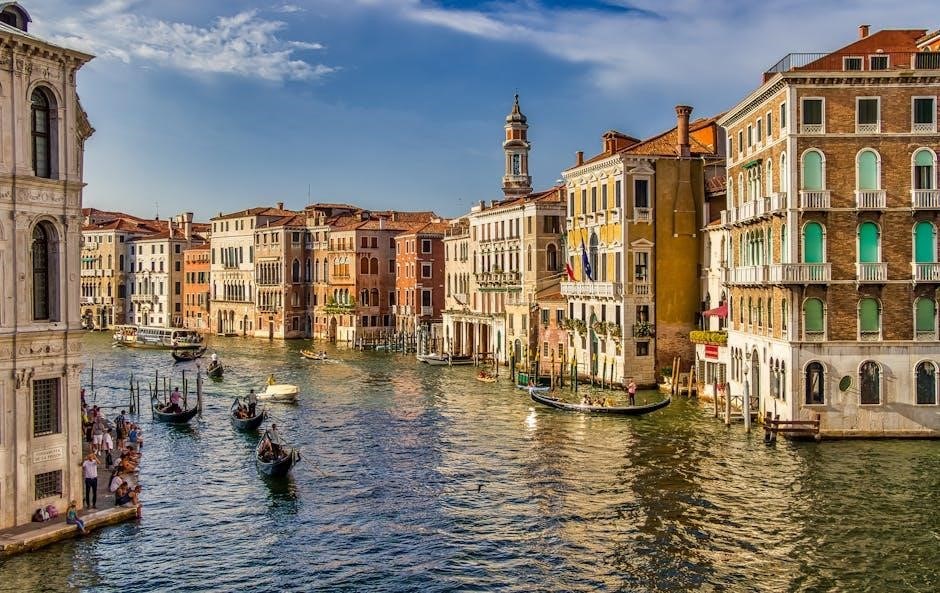
History of the Grand Union Canal
Built over 200 years ago, the Grand Union Canal was completed in 1805, providing a vital transport link between London and Birmingham. Its construction was authorized by an Act of Parliament in 1793, making it a cornerstone of industrial transportation during the 18th and 19th centuries.
Construction Timeline
The Grand Union Canal’s construction began shortly after the Act of Parliament was passed in 1793, with the primary goal of connecting London and Birmingham. The canal was meticulously planned and engineered, taking over a decade to complete. It was officially opened in 1805, marking a significant milestone in Britain’s industrial development. The construction involved digging extensive waterways, building locks, and creating towpaths for horses to pull barges. This monumental effort required the labor of thousands of workers, known as “navvies,” who toiled under challenging conditions. The canal’s completion not only facilitated trade but also laid the foundation for modern transportation networks in the region.
Historical Importance
The Grand Union Canal holds immense historical significance as a key transport route during the Industrial Revolution. Built in 1805, it connected London and Birmingham, facilitating the movement of goods such as coal, iron, and textiles. This waterway played a crucial role in Britain’s economic growth by reducing transportation costs and linking industrial centers. Over time, it became a symbol of engineering prowess and a testament to the labor of thousands of workers who constructed it. Today, the canal is a cherished part of Britain’s heritage, offering insights into its industrial past while serving as a popular destination for leisure activities. Its historical importance is preserved through its continued use and adaptation to modern times.
Route and Geography
The Grand Union Canal stretches 137 miles from London to Birmingham, traversing urban landscapes, quaint towns, and picturesque countryside, showcasing Britain’s diverse geography.
Path from London to Birmingham
The Grand Union Canal begins in London near Spaghetti Junction and stretches 137 miles to Birmingham, offering a scenic and historic route. The canal winds through urban areas like Bordesley and Small Heath, providing a traffic-free towpath ideal for cycling and walking. From London, it flows northwest, passing through quaint towns and countryside, showcasing Britain’s diverse landscapes. The route is well-marked on the Grand Union Canal map PDF, highlighting key landmarks and services. This iconic waterway connects two major cities while offering peaceful retreats and opportunities to explore hidden gems along the way. The path is popular among boaters, cyclists, and walkers, making it a vital transport link and recreational resource.

Key Sections of the Canal
The Grand Union Canal is divided into distinct sections, each offering unique experiences. The Paddington Branch in London provides a peaceful start, while the Hanwell Flight, with its six locks, is a notable engineering feat. The Main Line stretches northwest to Birmingham, passing through picturesque villages and industrial heritage sites. Key sections include the Leicester Line, connecting to the River Soar, and the Aylesbury Arm, a quiet rural stretch. The map PDF highlights these sections, marking locks, winding holes, and essential services. These divisions make navigation easier for boaters and walkers alike, ensuring a seamless journey along this historic waterway. Each section reflects the canal’s diverse character, blending urban and rural landscapes seamlessly.
Geographical Features
The Grand Union Canal traverses a diverse range of landscapes, from urban centers to idyllic countryside. Its route extends from London to Birmingham, passing through rolling hills, woodlands, and vibrant cityscapes. Key geographical features include the Main Line, which forms the backbone of the canal, and the Paddington Branch, offering scenic views of London. The Aylesbury Arm provides a tranquil rural experience, while the Leicester Line connects to the River Soar. The canal also intersects with rivers like the Trent and navigations such as the Erewash Canal; Locks, like the Hanwell Flight and Foxton Locks, are prominent features shaping the waterway’s topography. The towpath, a haven for walkers and cyclists, runs alongside the canal, showcasing its natural beauty and historical significance. These geographical elements make the Grand Union Canal a unique and vital part of the UK’s landscape.

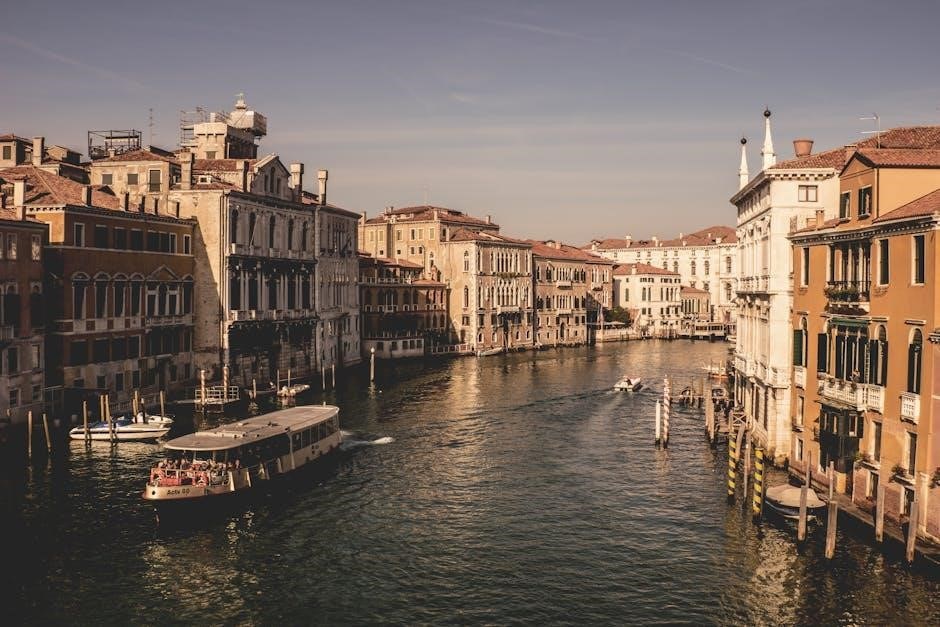
Features of the Grand Union Canal
The Grand Union Canal is renowned for its locks, winding holes, and diverse services. It offers boating, fishing, and birdwatching opportunities, while its towpath provides a traffic-free route for walkers and cyclists.
Locks and Their Function
The Grand Union Canal features numerous locks, essential for managing water levels and enabling boats to navigate between different sections. These locks, such as Hanwell and Copper Mill, allow vessels to ascend or descend by raising or lowering water levels. The locks are a key feature of the canal’s infrastructure, ensuring smooth navigation. They are clearly marked on the Grand Union Canal map PDF, providing boaters with vital information for planning journeys. The locks are operated manually or by lockkeepers, depending on the location, and play a crucial role in maintaining the canal’s functionality. Their historical significance and practical use make them a focal point for both boaters and historians exploring the waterway. The map PDF details each lock’s location and operation, aiding in efficient travel planning.
Services and Facilities
The Grand Union Canal offers a range of services and facilities to support boaters, walkers, and cyclists. The Grand Union Canal map PDF highlights mooring points, water refill stations, and waste disposal facilities, ensuring convenient access for all users. Along the towpath, there are numerous pubs, cafes, and shops, providing refreshments and supplies. Additionally, the canal is equipped with maintenance services for boats, including repair yards and fuel stations. The map also indicates nearby public transport links, such as bus stops, making it easier to plan trips. These amenities enhance the overall experience, whether for leisure or practical purposes. The Grand Union Canal map PDF is an essential tool for navigating and utilizing these services efficiently. Its detailed information ensures that users can fully enjoy the canal’s offerings. Regular updates to the map guarantee that all facilities remain accessible and well-maintained.
Points of Interest
The Grand Union Canal is rich in historical and natural attractions, making it a fascinating destination for explorers. The Grand Union Canal map PDF highlights iconic landmarks such as the Hanwell Flight of locks and the picturesque villages along the route. Visitors can explore historic pubs, many of which date back to the canal’s construction era. The towpath also offers opportunities to spot wildlife, including birds and fish, adding to the canal’s charm. Additionally, the map pinpoints scenic sections, such as the stretch through Bordesley and Small Heath, where the canal winds through urban and rural landscapes. These points of interest make the Grand Union Canal a vibrant destination for both history enthusiasts and nature lovers. The map ensures users can easily locate and enjoy these unique features.

Uses of the Grand Union Canal
The Grand Union Canal serves as a popular route for boating, fishing, and cycling. Its towpath is ideal for walkers, while its locks and services support various leisure activities.
Boating and Navigation
The Grand Union Canal is a popular destination for boating enthusiasts, offering a serene 137-mile route from London to Birmingham. With over 150 locks, it provides a unique navigation experience, suitable for both experienced boaters and newcomers. The canal’s locks are strategically placed to assist boats in overcoming elevation changes, ensuring smooth travel. Boaters can enjoy scenic views while navigating through urban and rural landscapes; Detailed maps, such as the Grand Union Canal Map PDF, are essential for planning routes, identifying lock locations, and accessing services like moorings and water points. These resources help boaters make the most of their journey along this historic waterway.
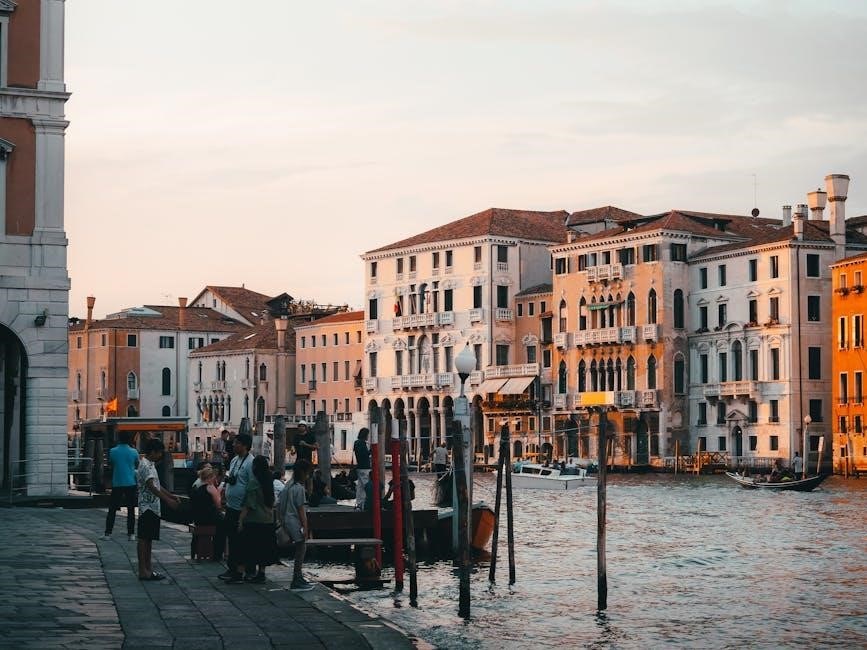
Walking and Cycling Trails
The Grand Union Canal offers extensive walking and cycling trails along its 137-mile towpath, providing a traffic-free route through diverse landscapes. The path stretches from London to Birmingham, passing through bustling cities and picturesque countryside. Cyclists and walkers can enjoy the tranquility of the canal, with opportunities to explore historic lock systems and scenic winding holes. The towpath is well-maintained, making it accessible for families and casual explorers. Detailed maps, such as the Grand Union Canal Map PDF, highlight key sections, geographical features, and nearby amenities, ensuring a well-planned and enjoyable adventure. Whether for leisure or exercise, the canal’s trails offer a unique way to experience England’s industrial heritage and natural beauty.
Fishing and Birdwatching
The Grand Union Canal is a haven for fishing and birdwatching enthusiasts, offering a serene environment to connect with nature. The canal is home to a variety of fish species, including carp, pike, and perch, making it a popular spot for anglers. Birdwatchers can spot diverse species such as herons, kingfishers, and swans along the waterway. The Grand Union Canal Map PDF provides detailed information about fishing hotspots and birdwatching areas, helping visitors make the most of their experience. With its tranquil atmosphere and rich wildlife, the canal is a must-visit destination for outdoor enthusiasts seeking to enjoy fishing and birdwatching in picturesque settings.
Details of the Grand Union Canal Map PDF
The Grand Union Canal Map PDF offers detailed coverage from London to Birmingham, highlighting locks, services, and facilities. It’s available in formats like PDF and Memory-Map for easy navigation.
Map Design and Layout
The Grand Union Canal Map PDF is meticulously designed to provide clear and detailed navigation information. It features a user-friendly layout with symbols, colors, and markings to distinguish locks, winding holes, and essential services. The map is divided into sections, highlighting key geographical features and facilities along the route. Its design ensures readability both on digital devices and in printed format, making it accessible for boaters, walkers, and cyclists. Regular updates guarantee the most accurate and up-to-date information, reflecting changes in the waterway network. The PDF format allows for easy zooming and scrolling, while the Memory-Map version offers advanced GPS-friendly navigation features. This thoughtful design makes the map an indispensable tool for exploring the Grand Union Canal.
Coverage Areas
The Grand Union Canal Map PDF covers the entire 137-mile route from London to Birmingham, detailing every section of the waterway. It includes the Main Line, Paddington Branch, and connections to the Leicester Navigation and River Trent. The map extends through various regions, such as the historic city of Leicester, the scenic River Soar, and the bustling areas of Hanwell and Bordesley. It also highlights key points like locks, winding holes, and auxiliary waterways. The PDF spans from Spaghetti Junction in Birmingham to the heart of London, ensuring comprehensive coverage of all geographical features and services along the canal. This extensive mapping provides users with a complete guide to navigating and exploring the Grand Union Canal’s diverse landscapes and amenities.
Updates and Revisions
The Grand Union Canal Map PDF is regularly updated to reflect changes in the waterway, ensuring accuracy for users. Recent revisions include the addition of new boating facilities, updated lock information, and improved mapping of cycling and walking trails. The map now incorporates feedback from boaters and walkers, enhancing its usability. It also includes the latest environmental improvements and new points of interest along the canal. The most recent version, updated in 2024, offers clearer layouts and more detailed coverage of key sections like the Leicester Navigation and River Soar. Users are encouraged to download the latest edition for the most up-to-date information, making it an essential resource for planning trips along the Grand Union Canal.

Using the Grand Union Canal Map PDF
The Grand Union Canal Map PDF is a detailed guide for navigating the waterway, featuring locks, moorings, and services. It aids in planning trips and discovering hidden gems along the route.
Reading and Interpreting the Map
Reading and interpreting the Grand Union Canal Map PDF requires understanding its symbols, color-coding, and markings. The map highlights locks, moorings, and services, with detailed sections for navigation. Zooming in reveals specific features like winding holes and water points. Legends explain icons for amenities such as pubs, shops, and boatyards. Users can identify distance markers and towpath access points, aiding in trip planning. The map also indicates historical sites and scenic areas, enhancing exploration. For accuracy, cross-reference with boating guides or apps. Familiarize yourself with the layout to maximize your journey along this iconic waterway.
Planning Your Trip
Planning your trip along the Grand Union Canal is simplified with the detailed PDF map. It provides insights into route selection, highlighting key stops and services. The map aids in identifying moorings, locks, and nearby amenities, making it easier to estimate travel time and plan overnight stays. Cyclists and walkers can use the towpath sections marked on the map to navigate seamlessly. The PDF’s clarity ensures that users can pinpoint points of interest, historical sites, and scenic spots, enhancing their exploration. Downloading the map in advance allows offline access, ensuring navigation remains uninterrupted. Whether boating or cycling, the Grand Union Canal Map PDF is an essential tool for a well-organized and enjoyable journey.
Downloading the Grand Union Canal Map PDF
Download the Grand Union Canal Map PDF for free, featuring detailed coverage of the Main Canal, locks, and services. Available at waterscape.com for easy access.
Sources for Download
The Grand Union Canal Map PDF is available from various trusted sources. Visit Waterscape for the most up-to-date maps, or download from Canal & River Trust. Additionally, platforms like Droitwich Canals offer free Acrobat (PDF) and Memory-Map (QCT) formats. Ensure you select the latest version for accurate information on locks, services, and navigation. These sources provide comprehensive guides for boaters, cyclists, and walkers, making your journey planning seamless and enjoyable.
Downloading Tips
When downloading the Grand Union Canal Map PDF, ensure you select the correct format (Acrobat PDF or Memory-Map QCT) for compatibility with your device. Choose the latest version for updated information on locks, services, and navigation; For optimal viewing, download on a computer or laptop before transferring to mobile devices. Consider printing the map for offline use, especially in areas with limited internet access. Always verify the source to ensure authenticity and avoid outdated versions. Check for periodic updates to stay informed about any changes in the waterway. This ensures your journey remains well-planned and enjoyable, whether boating, walking, or cycling along the canal.
The Grand Union Canal Map PDF is an essential resource for anyone exploring this iconic waterway. Whether you’re planning a boating trip, a walking adventure, or simply seeking to understand the canal’s history and features, the map provides comprehensive details. Its clear layout and updated information ensure users can navigate effortlessly. By downloading the map, you gain access to valuable insights into locks, services, and points of interest along the route. This tool is indispensable for both seasoned travelers and first-time visitors, offering a seamless way to enjoy the Grand Union Canal’s beauty and heritage. Make sure to download the latest version to fully immerse yourself in this historic and scenic journey from London to Birmingham.
